ReTain trial in Balaton tart cherry and Regina sweet cherry
Improving fruit set with ReTain in light yielding cherry varieties, Balaton tart cherry and Regina sweet cherry.

The plant growth regulator ReTain reduces ethylene production in cherry flowers and delays flower senescence. In this Michigan State University Extension trial, we tried to improve fruit set in the light yielding cherry varieties, Balaton tart cherry and Regina sweet cherry. ReTain was applied at three grower farms, two Balaton blocks and one Regina block.
Each block was approximately 10 acres where half the block was treated and the other half untreated. The product was applied at the recommended rate of 1 pouch per acre (11.7 ounces per acre) at popcorn to early bloom stage at 100 gallons per acre. No surfactants or fungicides were tank mixed with the product. Temperature was carefully monitored during application timing as the effectiveness of plant growth regulators decline at low temperatures. Also, applying under slow drying conditions was recommended so application was made early in the day before temperatures rise. Temperatures at application and two days following will be documented for each site (Table 1).
|
Table 1. Date of application, amount of bloom and high temperatures two days post application of ReTain at three Farms. | |||||
|---|---|---|---|---|---|
|
Farm |
Date applied |
Amount of bloom |
Temp at application (degree F) |
One-day post (degree F) |
Two-days post (degree F) |
|
Farm A |
26-May |
75% |
64 |
75 |
75 |
|
Farm B |
25-May |
10% |
63 |
74.4 |
71 |
|
Farm C |
25-May |
10% |
62.4 |
74.4 |
71 |
Fruit set data was collected in only in Balaton. During bloom, one branch on 30 trees in each treatment was flagged. The number of blossoms was counted and recorded on a datasheet but also on a tag attached to the branch. Limb diameter was measured just above where the first flowers are counted. At harvest, fruit were counted on each flagged branch to determine percent fruit set (Figs. 1 and 2).
In addition to evaluating fruit set, we also hand pollinated five branches per treatment to be sure pollen deposition was not a factor. This was only done on one farm due to the limited amount of available pollen. The number of flowers and fruit were also counted on the hand pollinated branches (Fig. 3). For each Balaton block, the number of tanks filled during harvest were counted for both treated and untreated areas. This gave us an approximate yield per tree based on the growers’ average weight per tank (Table 2).
|
Table 2. Average weight harvested per tree in two Balaton blocks where half was treated with ReTain and the other half untreated. | ||
|---|---|---|
|
Treatment |
Farm A - Balaton |
Farm B - Balaton |
|
Treated |
107.77 |
48.47 |
|
Untreated |
110.32 |
39.65 |
Due to compact bloom in cherry, we were unable to count Regina blossoms. However, we did come back at harvest and count fruit in the two Regina blocks (Figs. 4 and 5), one Attika block (Fig. 6) and two additional Balaton blocks (Figs. 7 and 8). At these sites, one whole branch coming off the main scaffold was chosen and all fruit was counted. Thirty trees per treatment were evaluated.
Conclusions
ReTain increased fruit set in both Balaton and Regina. We did not increase fruit set in Attika with ReTain. However, in Farm A, where the ReTain application was made at 75 percent bloom, we did not increase fruit set in Balaton. We surmise that ReTain applications must go on early in the season, and popcorn timing application is recommended. Growers will not see the benefits of ReTain in increasing fruit set in cherries with late applications. Other ReTain work has shown that a popcorn timing followed by another application three days later results in improved fruit set in sweet cherries.
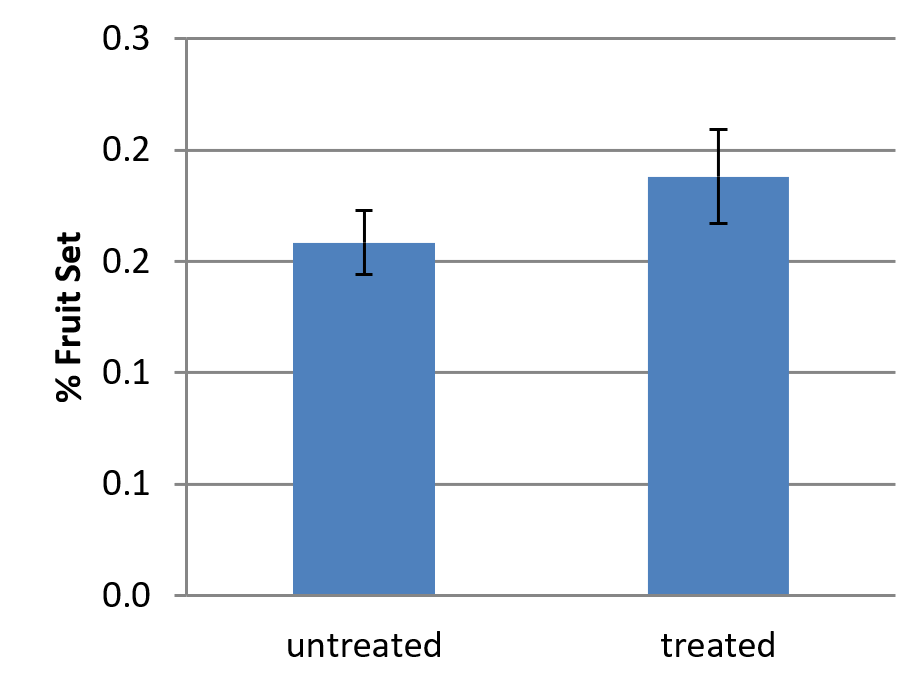
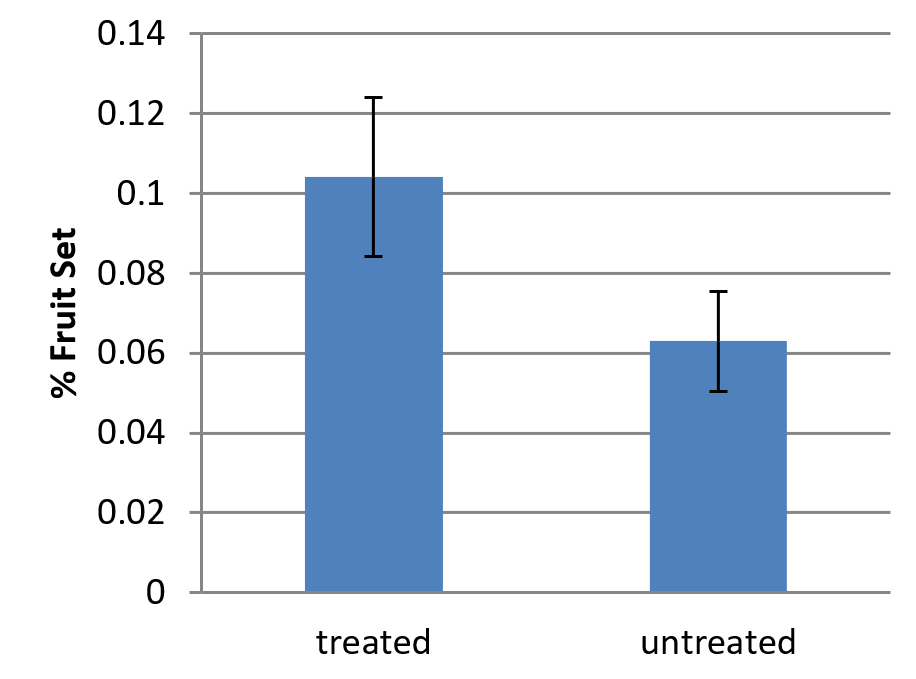
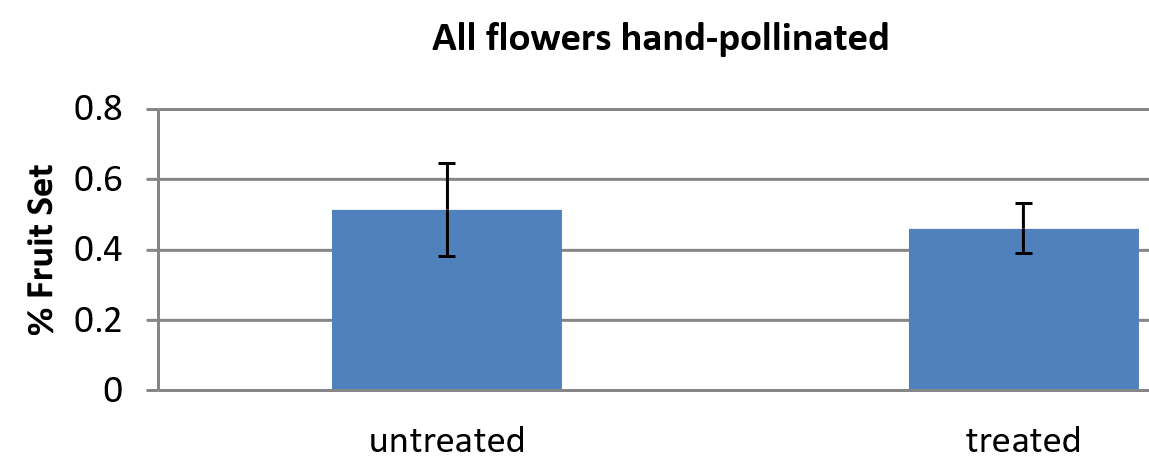
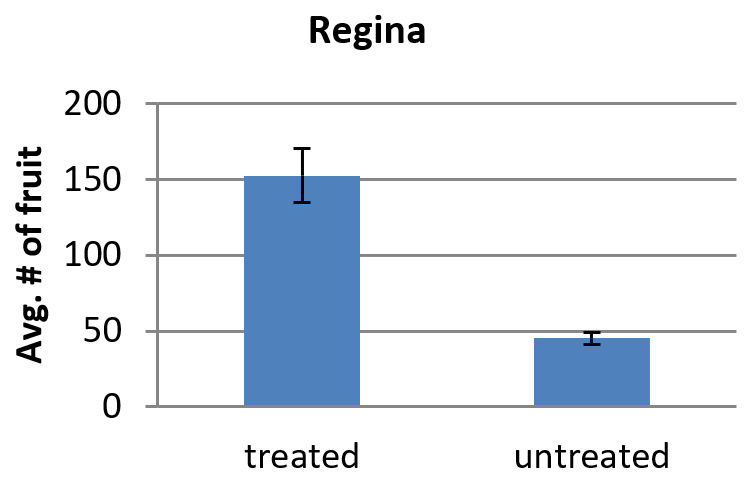
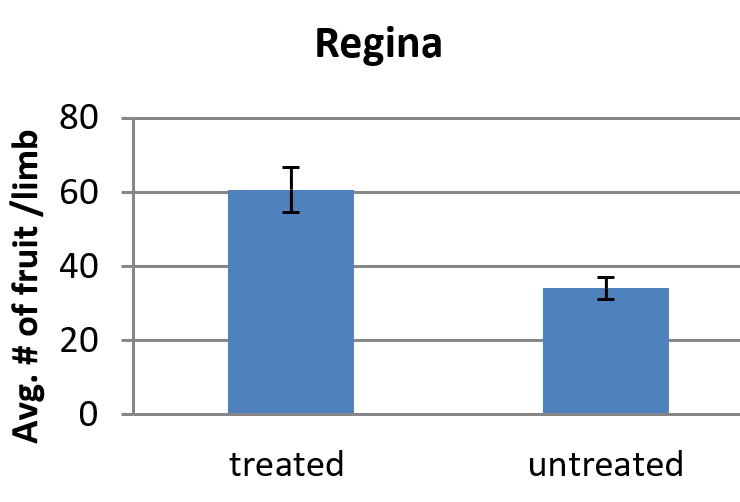
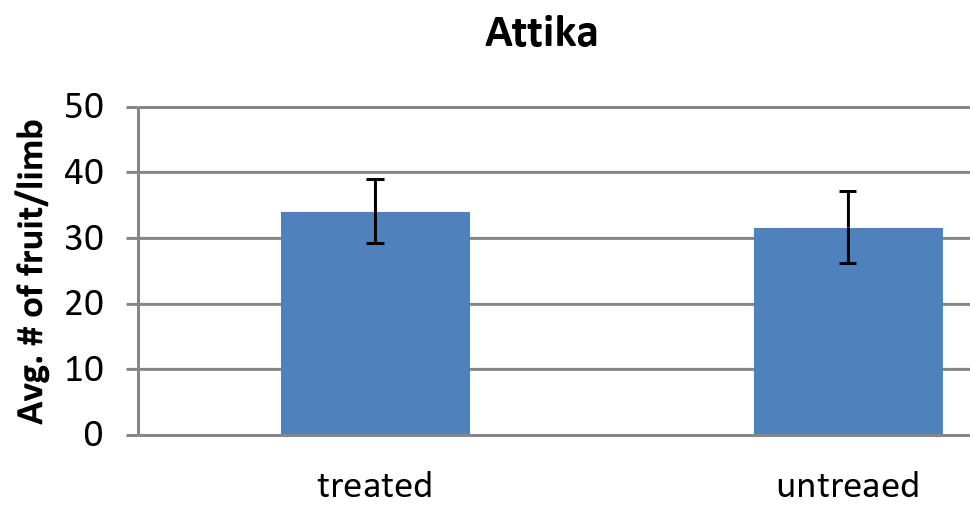
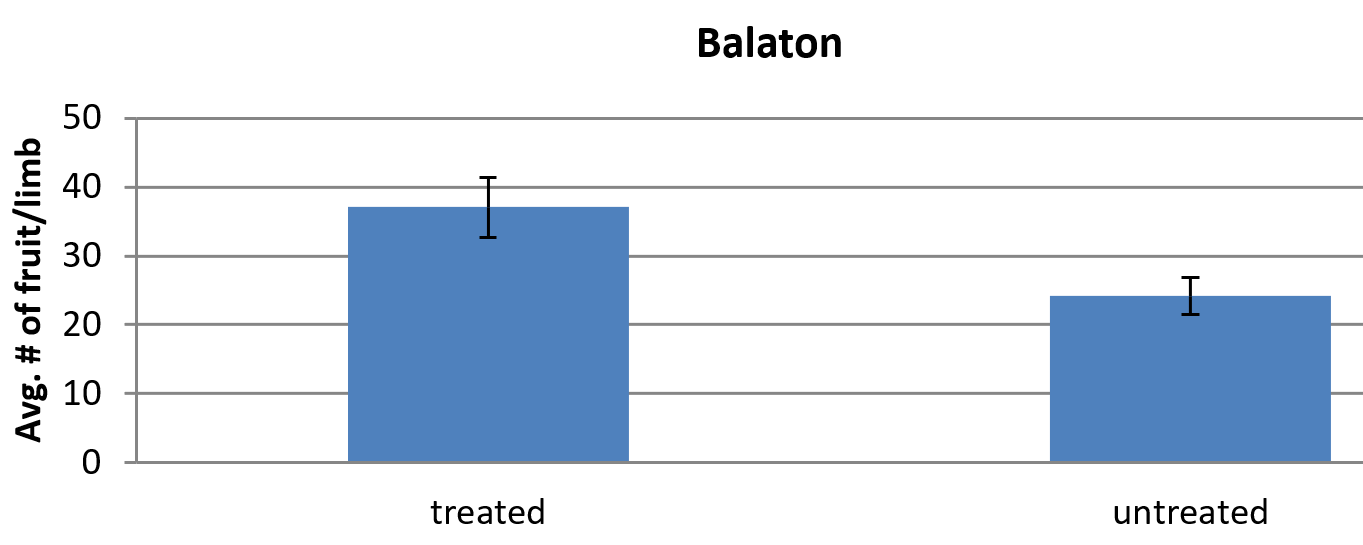
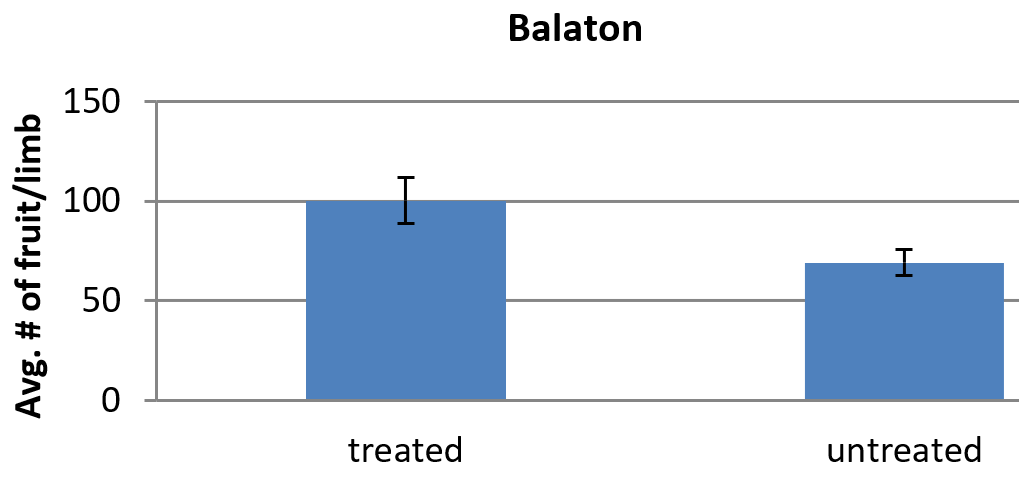



 Print
Print Email
Email




